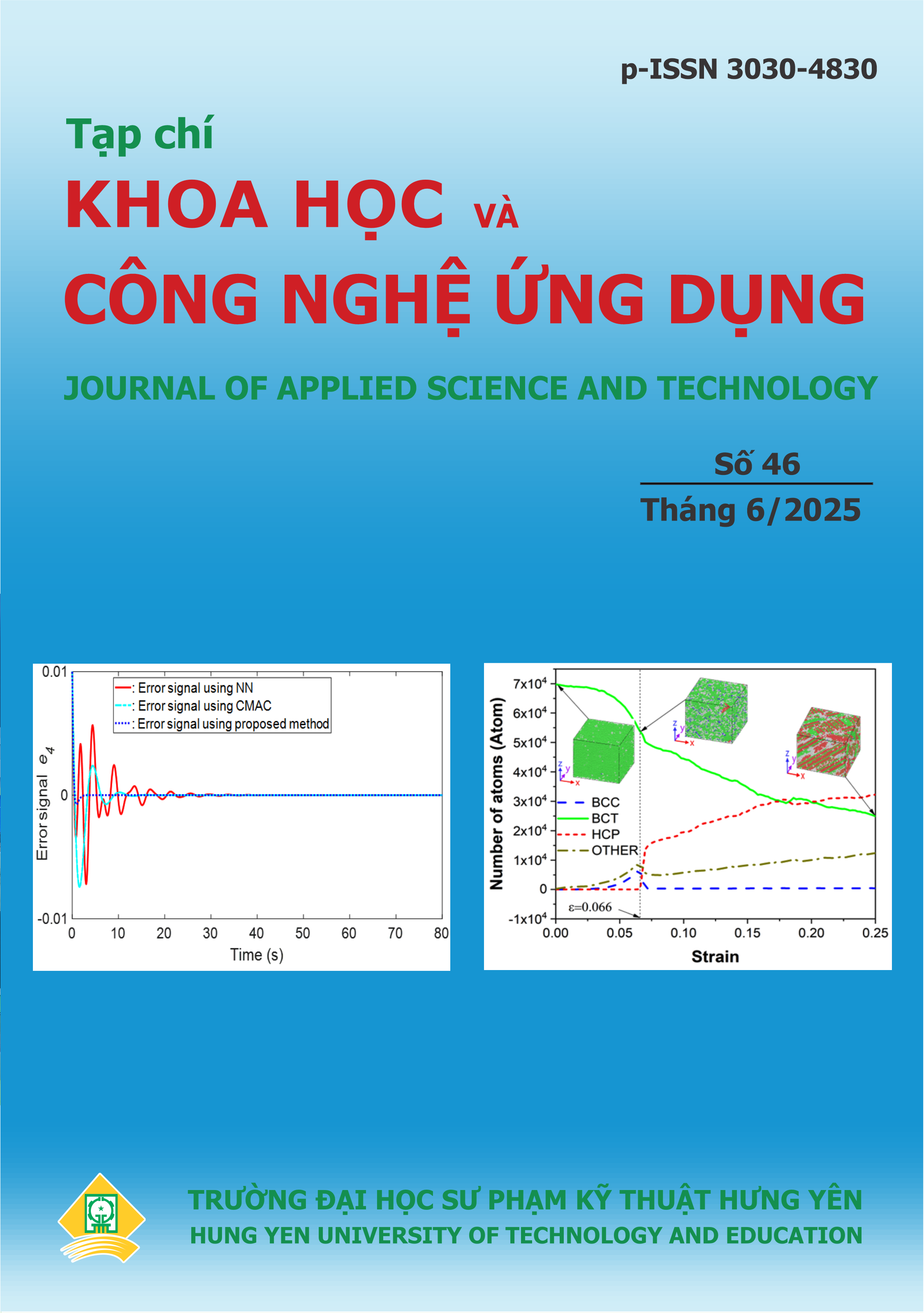A COMPARISON OF DATA BALANCING METHODS FOR MEDICAL DATA
Abstract
Class imbalance is a common issue in medical datasets and affects the performance of deep learning models in medical diagnosis. This study aims to evaluate different data balancing methods for medical imaging classification tasks. Experiments were conducted on two datasets, chest X-rays for pneumonia detection and brain MRI scans for tumor classification. Traditional resampling methods (downsampling and oversampling), advanced oversampling techniques (SMOTE, ADAYSN), and Generative Adversarial Networks (GANs) were implemented and compared. Performance metrics including recall, F1-score, ROCAUC, and G-Mean were used to assess the effectiveness of each method. Our results demonstrate that GAN-based approaches consistently outperform traditional techniques across various evaluation metrics, with notable improvements in F1-score (2.95 - 52.4%), ROC-AUC (7.93 - 19.5%), and geometric mean (6.28 - 36.3%). This study provides valuable insights for researchers and practitioners seeking to improve diagnostic models trained on imbalanced medical datasets.
References
V. López, A. Fernández, S. García, V. Palade, and F. Herrera, “An insight into classification with imbalanced data: Empirical results and current trends on using data intrinsic characteristics.” Information Sciences, 2013, vol. 250, pp. 113-141, doi: 10.1016/j.ins.2013.07.007.
N. V. Chawla, K. W. Bowyer, L. O. Hall, and W. P. Kegelmeyer, “SMOTE: Synthetic minority over-sampling technique.” Journal of Artificial Intelligence Research, 2002, vol. 16, pp. 321-357, doi: 10.1613/jair.953.
N. V. Chawla, N. Japkowicz, and A. Kotcz, “Editorial: Special issue on learning from imbalanced data sets.” ACM SIGKDD Explorations Newsletter, 2004, vol. 6, no. 1, pp. 1-6, doi: 10.1145/1007730.1007733.
H. He, Y. Bai, E. A. Garcia, and S. Li, “ADASYN: Adaptive synthetic sampling approach for imbalanced learning.” In Proceedings of the International Joint Conference on Neural Networks (IJCNN), 2008, pp. 1322-1328, doi: 10.1109/IJCNN.2008.4633969.
M. Buda, A. Maki, and M. A. Mazurowski, “A systematic study of the class imbalance problem in convolutional neural networks.” Neural Networks, 2018, vol. 106, pp. 249-259, doi: 10.1016/j.neunet.2018.07.011.
G. Litjens, et al., “A survey on deep learning in medical image analysis.” Medical Image Analysis, 2017, vol. 42, pp. 60-88.
M. S. Rahman, and L. Wang, “Class imbalance problem in deep learning for medical image analysis: A review.” IEEE Transactions on Medical Imaging, 2019, vol. 38, no. 11, pp. 2532-2542.
J. Zhang, “A survey of data preprocessing techniques for class imbalance.” International Journal of Data Science and Analysis, 2018, vol. 3, pp. 45-56.
J. He, X. Wu, and R. M. M. M. Tan, “ADASYN: Adaptive Synthetic Sampling Approach for Imbalanced Learning.” Proceedings of the IEEE International Conference on Data Mining, 2008, pp. 109-116.
N. V. Chawla, “Borderline-SMOTE: A new over-sampling method for imbalanced data classification.” Proceedings of the IEEE International Conference on Data Mining, 2003, pp. 666-672.
H. S. Lee, J. H. Lee, and B. J. Kim, “SMOTEBoost: Improving classification performance when classes are imbalanced.” Journal of Machine Learning Research, 2010, vol. 11, pp. 1699-1727.
A. Radford, L. Metz, and S. Chintala, “Unsupervised representation learning with deep convolutional generative adversarial networks.” Proceedings of the International Conference on Machine Learning, 2016, pp. 448-456.
J. Han, W. H. Lee, and J. Lee, “Breast cancer detection using GAN-based synthetic mammogram generation.” Journal of Medical Imaging, 2018, vol. 5, no. 2, pp. 210-220.
A. Salehinejad, M. M. Ghanbari, and M. S. Rezaei, “Conditional GAN for generating synthetic brain MRI scans for tumor classification.” IEEE Access, 2019, vol. 7, pp. 85322-85332.
J. Shin, S. S. Kim, and H. Lee, “Chest X-ray image augmentation using GAN to balance abnormal and normal data.” Journal of Healthcare Engineering, vol. 2019, Article ID 7284612.
I. Goodfellow et al., “Generative adversarial nets.” In Advances in Neural Information Processing Systems 27, 2014, pp. 2672-2680.
K. He, X. Zhang, S. Ren, and J. Sun, “Deep residual learning for image recognition.” In Proceedings of the IEEE Conference on Computer Vision and Pattern Recognition, 2016, pp. 770-778, doi: 10.1109/CVPR.2016.90.
T. Saito and M. Rehmsmeier, “The precision-recall plot is more informative than the ROC plot when evaluating binary classifiers on imbalanced datasets,” PLoS ONE, 2015, vol. 10, no. 3, e0118432, doi: 10.1371/journal.pone.0118432.
H. He and E. A. Garcia, “Learning from imbalanced data,” IEEE Trans. Knowl. Data Eng., 2009, vol. 21, no. 9, pp. 1263–1284, doi: 10.1109/TKDE.2008.239.
D. M. W. Powers, “Evaluation: From precision, recall and F-measure to ROC, informedness, markedness and correlation,” J. Mach. Learn. Technol., 2011, vol. 2, no. 1, pp. 37–63.
J. Davis and M. Goadrich, “The relationship between Precision-Recall and ROC curves,” in Proc. 23rd Int. Conf. Mach. Learn. (ICML), 2006, pp. 233–240.
A. Fernández, S. García, M. Galar, R. C. Prati, B. Krawczyk, and F. Herrera, Learning from Imbalanced Data Sets, Springer, 2018.
M. Frid-Adar, E. Klang, M. Amitai, J. Goldberger, and H. Greenspan, “Synthetic data augmentation using GAN for improved liver lesion classification,” in Proc. IEEE ISBI, 2018, pp. 289–293.
X. Yi, E. Walia, and P. Babyn, “Generative adversarial network in medical imaging: A review,” Med. Image Anal., 2019, vol. 58, Article ID 101552, doi: 10.1016/j.media.2019.101552.
T. Zhou et al., “A review of deep learning methods for medical image synthesis,” Neurocomputing, 2021, vol. 454, pp. 137–153, doi: 10.1016/j.neucom.2021.04.036.
J. Ho, A. Jain, and P. Abbeel, “Denoising diffusion probabilistic models,” arXiv preprint, arXiv:2006.11239, 2020.
A. Kazerouni and J. Liang, “A survey of diffusion models in medical imaging,” arXiv preprint, arXiv:2301.06692, 2023.

